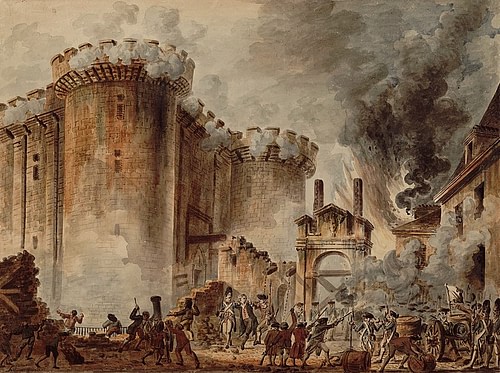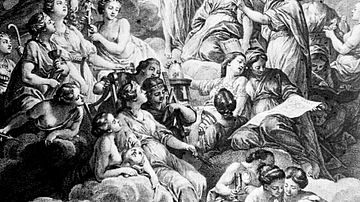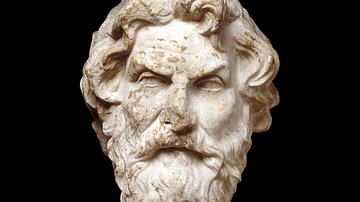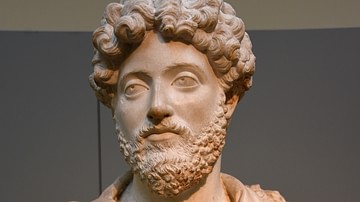
Mary Wollstonecraft (1759-1797) was an Enlightenment philosopher who, as author of A Vindication of the Rights of Woman, is widely credited as the founder of feminism. Wollstonecraft called for equal education opportunities for men and women, and she stressed the benefits to society as a whole of improving the situation of women in this and other areas of daily life.
Early Life
Mary Wollstonecraft was born on 27 April 1759 in London into a farming family suffering difficult circumstances, largely due to her father's actions. Mary's father was a brutal man, and Mary was essentially self-taught. To make her own way in life, Mary faced the significant challenge that the possibilities were severely limited due to the social conventions of the period. Mary was determined to improve the fortunes of her family, and so she found work as a companion to a wealthy lady who lived in Bath and as a governess for the children of another wealthy patron, Mr Kingsborough, an Irish landowner. More ambitiously, in 1784, Mary created and managed her own nonconformist school. This enterprise, located in Newington Green (then outside London), also involved Mary's sisters, but unfortunately, it was not a lasting success.
A Successful Author
Wollstonecraft was keen to challenge the social conventions of her day, which resulted in young women not having the same educational, work, and social opportunities as men. She wrote her Thoughts on the Education of Daughters in 1787, which was published by Joseph Johnson, who became her long-time publisher. The current situation was that girls were given a basic education, but there were no secondary schools since they did not need any preparation for colleges and universities because they were not permitted to enter higher education. The only girls who received an education anything like that open to boys were those whose wealthy fathers decided to employ private tutors for the purpose. Wollstonecraft proposed radically changing this situation.
Wollstonecraft was not the first author to demand better rights for women. Marie Le Jars de Gournay (1565-1645), known as an expert in alchemy, had written The Equality of Men and Women, which was published in 1622. François Poullain de la Barre (1647-1723) had proposed similar ideas in his The Equality of the Sexes, published in 1673 in French and then translated into English in 1677. Many of the ladies who managed the salons of Paris, where intellectuals of both sexes mingled in an informal setting, had made similar calls for greater equality. Education for women, in particular, had preoccupied many of the scientists of the Scientific Revolution, too. Bathsua Makin (c. 1612 to c. 1674) had proposed that women should be given access to a scientific education. Despite these calls by some intellectuals, not much had been achieved in practical terms. Further, women intellectuals still faced ridicule from many of their male counterparts, as can be seen in such satires as The Learned Ladies by the playwright Molière (1622-1673), first staged in 1672.
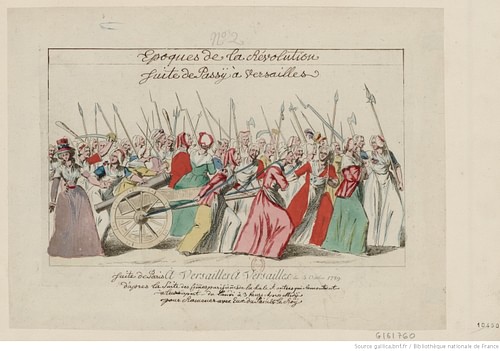
The fledgling feminist movement was gaining momentum, though, and Wollstonecraft gave it a tremendous new drive. She continued the battle, along with other female writers, against the male misogynistic view that women were intellectually inferior to men and less capable than males of maintaining good morals. This negative view of women was even expounded by such prominent thinkers as Jean-Jacques Rousseau (1712-1778).
Wollstonecraft moved to London in 1787 to further pursue her career as a writer. Johnson secured her a post as a permanent writer of reviews for the journal he ran, Analytical Review. Wollstonecraft also worked as a translator, published a text for education, Original Stories from Real Life, and wrote a novel, Mary, or the Wrongs of Women (aka Mary: A Fiction), which was not published until 1798. Through Johnson, Wollstonecraft met other writers and artists, notably the Romantic poet William Blake (1757-1827), the Swiss painter Henry Fuseli (1741-1825), the biblical scholar Alexander Geddes (1737-1802), and Thomas Paine (1737-1809), the philosopher, revolutionary, and Founding Father of the United States. One writer who caught more than Wollstonecraft's intellectual interest was the radical author William Godwin (1756-1836). Godwin was also a political philosopher, and the couple's mutual interest in reform blossomed into a romantic relationship; the couple married in 1797.
Given this circle of associates, it is not surprising that Wollstonecraft turned to political philosophy and revolutionary ideas. In 1790, Wollstonecraft published A Vindication of the Rights of Men, a critical response to Reflections on the Revolution in France by Edmund Burke (1729-1797), which contained Burke's defence of institutions and time-tested traditions. Wollstonecraft ridiculed the veneration of precisely those institutions which were holding women back. She memorably describes the House of Commons as very often resembling a "beer-garden" (Robertson, 739) and the periodic elections to that house as "scenes of drunken riot and beastly gluttony" (ibid). Unimpressed with what she regarded as Burke's backward-looking stance, Wollstonecraft summarised his view as giving "reverence to the rust of antiquity" (ibid). Wollstonecraft maintained a much more positive attitude to progress than thinkers like Burke, and her chief interest remained the task of convincing men of the necessity for improving women's rights. Accordingly, she now set about writing her most famous work on that subject.

The Rights of Women
A Vindication of the Rights of Woman was published in 1792. Wollstonecraft here proposed again that men and women should receive the same educational opportunities. Further, she "criticized the formal and informal limitations imposed on women in contemporary society, and demanded that the rights being newly acquired by men be extended to women also" (Burns, 436). Wollstonecraft even went so far as to state that the current state of women's education was a deliberate attempt to reduce their capabilities, a policy of what we might describe as "keep them in their place". Women were being treated as mere decorative appendages to men's lives, and their value in society was far too dependent on their looks or on restricted roles such as motherhood, Wollstonecraft argued. Women were also, because they had only very limited educational and employment opportunities, being pushed by society into marriages in order to gain the financial support they needed to live, a situation Wollstonecraft describes as ‘legal prostitution'. Women needed more opportunities to be able to fulfill themselves, employ the reason they possessed (which was the same as any man possessed, she argued), and be happier in their lives in general. She also points out the advantages to society as a whole of not wasting the talents of half the population. Wollstonecraft argued that women should have some sort of political representation and that they should be allowed into what were then male-only professions such as medicine and commerce.
Wollstonecraft makes a powerful summary aimed at the ears of men in the final paragraph of chapter nine of her book:
Would men but generously snap our chains, and be content with rational fellowship, instead of slavish obedience, they would find us more observant daughters, more affectionate sisters, more faithful wives, more reasonable mothers—in a word, better citizens. We should then love them with true affection, because we should learn to respect ourselves; and the peace of mind of a worthy man would not be interrupted by the idle vanity of his wife, nor his babes sent to nestle in a strange bosom, having never found a home in their mother's.
Wollstonecraft gives a final and succinct plea at the very end of the book:
Let woman share the rights, and she will emulate the virtues of man.
The book caused controversy since its ideas were radical indeed, but it sold very well. Alas, Wollstonecraft's ideas were not adopted by those with the power to make them a reality.
The Revolution in France
Wollstonecraft was keen to see for herself the tremendous upheaval going on in France, and so she went to live in Paris as 1792 came to a close. The result of her observations of the ongoing French Revolution (1789-1799), which witnessed the end of the French monarchy, were published in 1794 in her book An Historical and Moral View of Origins and Progress of the French Revolution.
While in Paris, Wollstonecraft conducted an affair with Gilbert Imlay, an American businessman. The couple had a daughter together (Fanny, b. 1794) and briefly travelled through various Scandinavian countries. Wollstonecraft wrote of her experience in Letters Written During a Short Residence in Sweden, Norway, and Denmark, published in 1796. In the following passage, she describes in detail her thoughts on the sublime, then a growing concept in aesthetics where there is a blending of emotion and reason in a single experience:
Reaching the cascade, or rather cataract, the roaring of which had a long time announced its vicinity, my soul was hurried by the falls into a new train of reflections. The impetuous dashing of the rebounding torrent from the dark cavities which mocked the exploring eye, produced an equal activity in my mind: my thoughts darted from earth to heaven, and I asked myself why I was chained to life and its misery? Still the tumultuous emotions this sublime object excited, were pleasurable; and, viewing it, my soul rose, with renewed dignity, above its cares – grasping at immortality – it seemed as impossible to stop the current of my thoughts, as of the always varying, still the same, torrent before me – I stretched out my hand to eternity, bounding over the dark speck of life to come.
(Robertson, 510)
Wollstonecraft returned to London, but after the break-up with Imlay, she was driven to attempt suicide; she survived. All of these events caused a public scandal. A new relationship then began with William Godwin from 1796, as noted above. The couple married just before their child was born, a daughter who became better known as Mary Shelley (1797-1851) and who wrote the celebrated gothic novel Frankenstein (1818).
Major Works by Wollstonecraft
Mary Wollstonecraft's most important works include:
Thoughts on the Education of Daughters (1787)
Original Stories from Real Life (1788)
Mary, or the Wrongs of Women (1788)
A Vindication of the Rights of Men (1790)
A Vindication of the Rights of Woman (1792)
An Historical and Moral View of Origins and Progress of the French Revolution (1794)
Letters Written During a Short Residence in Sweden, Norway, and Denmark (1796)
Death & Legacy
Mary Wollstonecraft died in London on 10 September 1797, ten days after giving birth to her daughter. Wollstonecraft proved an inspiration, particularly from the mid-19th century in the United States, to later leaders of the women's rights movement such as Elizabeth Cady Stanton (1815-1902) and Margaret Fuller (1810-1850). Early biographies of Wollstonecraft tended to overemphasise her tumultuous non-marital relationships. A more balanced view was given in Godwin's biography of his wife which was first published in 1798. Thankfully, Wollstonecraft's ideas on equality rather than her personal life have been her lasting legacy. In 2006, the British cultural commentator Melvyn Bragg placed A Vindication of the Rights of Woman on his list of 12 books that changed the world.
